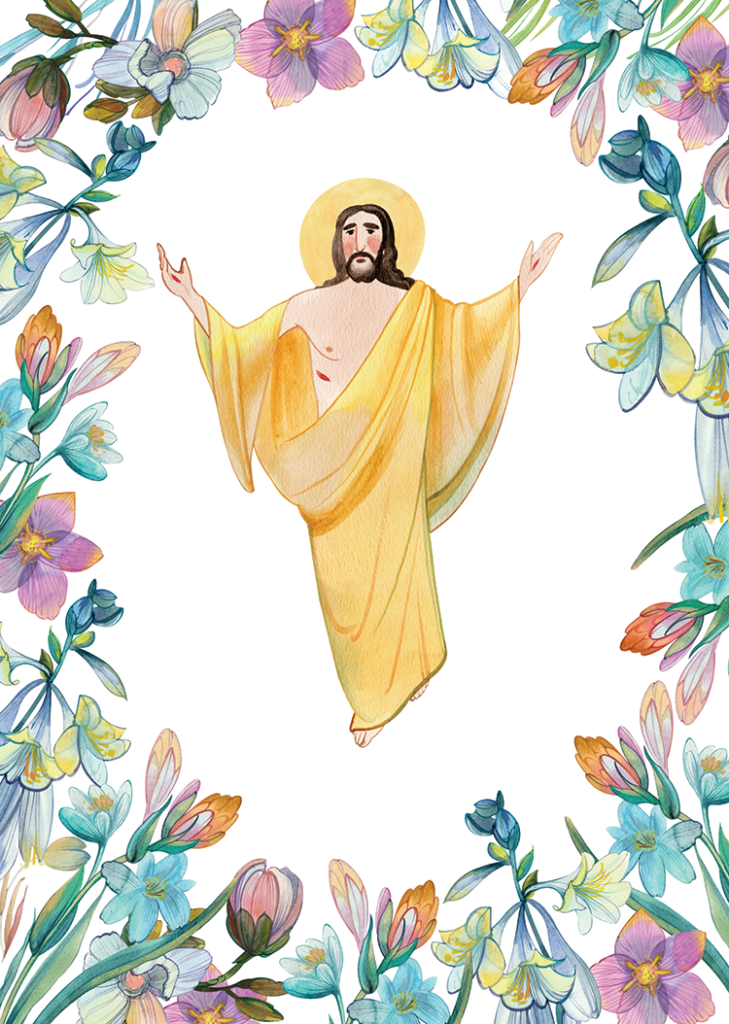The Word is Out
“Why do you look for the living among the dead?”
“He is not here; He has risen!”
Luke 24:5b-6a (NIV)
The date was June 18, 1815, and the people of England were deeply worried. British, Dutch and German soldiers were engaged that day in a desperate battle against a French army under Napoleon at a place called Waterloo. Eager to find out how it was all going, the English people relied on a system of semaphore signals passed from one station to another.
One of those stations was located on the tower of Winchester Cathedral, which late in the day flashed the signal, “W-E-L-L-I-N-G-T-O-N — D-E-F-E-A-T-E-D.” Just at that moment, a sudden fog descended on the tower, making it impossible to see. News of a defeat started to spread quickly throughout the city. The entire countryside was soon convinced that their nation had lost. But then, without warning, the fog lifted and the remainder of the message came through. It had four words, not two. The complete message was, “W-E-L-L-I-N-G-T-O-N — D-E-F-E-A-T-E-D — T-H-E — E-N-E-M-Y.”
It took only a few minutes for the good news to spread. And as it did, sorrow turned to joy. Defeat was turned into victory.
When Jesus’ body was laid in the tomb on that first Good Friday afternoon, it seemed that hope had died, even in the hearts of those closest to Him. Having witnessed that frightful crucifixion, their spirits were overcome with a thick fog of disappointment and despair, one from which they probably imagined they would never emerge.
But as James Hewett points out, they had heard only part of the message. On Friday, “Christ defeated” was all they knew. It was not until the morning of the third day—Easter Sunday—that the fog would lift, and they would receive the glorious news in full: “Christ defeated death!” He was alive. The One whom the Apostle John would later testify to as “The Word” (John 1:14) was no longer in the tomb. He was out!
In a world often characterized by misinformation and half-truths, it’s not at all surprising that the world-changing message of Easter should sometimes struggle to get through. After all, when so much of what we see and hear turns out to be either inaccurate or downright deceptive, why should we believe this good news? And who says we can even trust the source that’s sharing it with us? Indeed, since there are so many to choose from in the first place, one can reasonably ask why this particular message should rise to the top of our inbox.
In fact, therein lies another problem. Studies show that on average, people now check their inboxes 77 times a day, and that the time spent on any one screen continues to decline. According to some researchers, people in 2004 averaged 150 seconds per screen before switching to another. By 2012, that had declined to 75 seconds. And in 2021, it had fallen to 47 seconds. Breaking through attention spans that are declining at such an astonishing rate is no small task.
But while the communication challenges of the world in which we live are clearly very real, there are two things to keep in mind. First, imperfections in communication in no way alter the truth of the message itself. After all, the men and women who proclaimed the good news of Jesus’ resurrection on that first Easter Sunday weren’t perfect by any means. They were just people. People just like you and me.
Second, and far more important, the Gospel message itself, which is ultimately grounded in the truth of Christ’s resurrection, has a power that can break through any barrier. It has changed everything forever.
His resurrection means that grief is gone. The women went to the tomb intending to anoint Jesus’ body with spices. But they discovered that instead of a need for mourning, there was reason for rejoicing. We still rejoice today.
His resurrection means that fear is forgotten. No longer was there any need to cower in the face of death. It had lost its sting, and those who believed in Him knew that they would have everlasting life. And that’s still the case.
His resurrection means that doubt is dead. All the talk and all the speculation about who this Jesus really was had been resolved. He truly was what the Apostle Peter had once called Him: “the Messiah, the Son of the living God” (Matthew 16:16). And He lives even now.
Donald Harvey Tippett once wrote that “if Easter means anything to modern man, it means that eternal truth is eternal. You may nail it to the tree, wrap it up in grave clothes, and seal it in a tomb. But truth crushed to earth shall rise again. Truth does not perish. It cannot be destroyed. It may be distorted. It can be silenced temporarily. It has been compelled to carry its cross to Calvary’s brow. But with an inevitable certainty, after every Black Friday dawns truth’s Easter morn.”
The fog has lifted. The message is clear. And it’s victory.
Illustration by Svetlana Vorotniak iStock / Getty Images Plus







